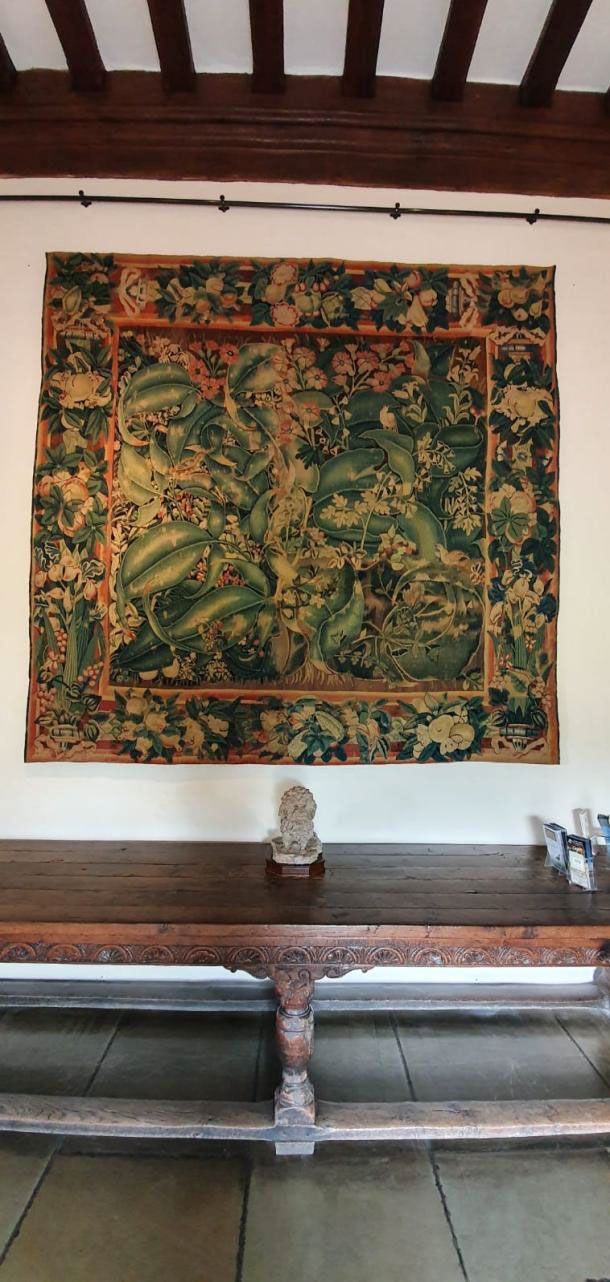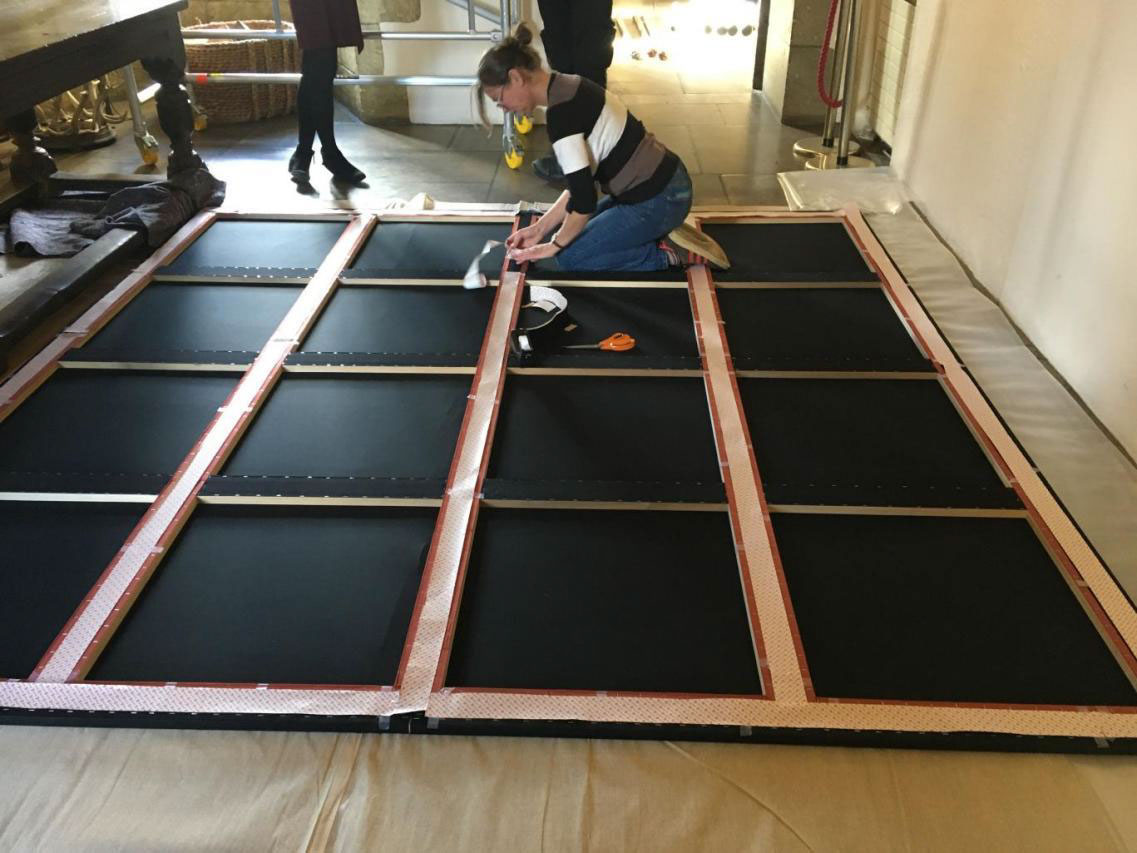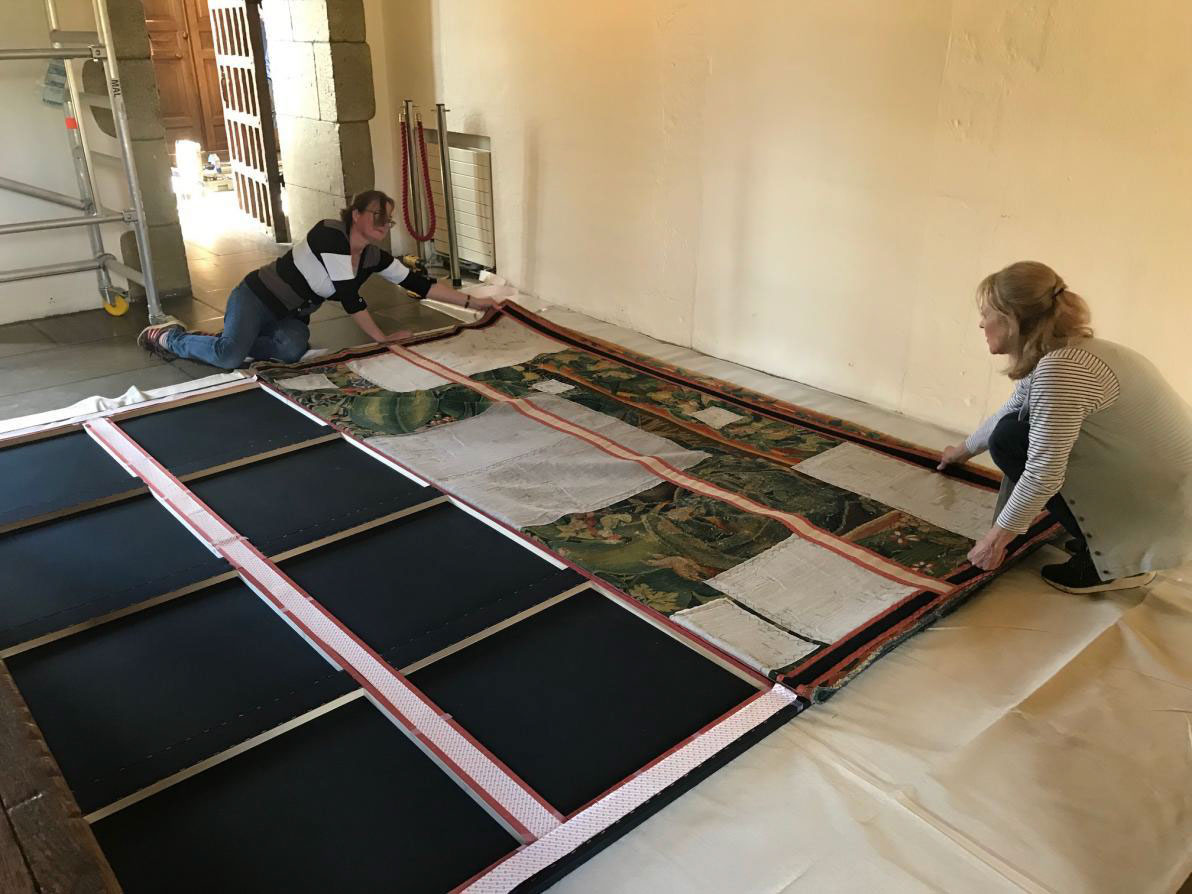
16th Century, Flemish
In 2018, an opportunity to devise an innovative hanging method was provided in the conservation of a 400 year old verdure tapestry from Leeds Castle. The tapestry is on permanent open display in the entrance of the Island Building, positioned opposite the front door which is kept open during visiting hours. The stretcher to which the tapestry was fixed was not providing adequate support: it had dropped sufficiently to bulge outward along the bottom edge. In addition, the stretcher was suspended from the picture rail and therefore, was able to move in response to surrounding air-flow.

After initial conservation vacuuming to remove a thick layer of dust, the level of ingrained soiling was assessed as being sufficient to warrant the tapestry being sent to Belgium for specialist cleaning. De Witt offer a unique and technically advanced service in wet-cleaning historic tapestries using a large vacuum-suction table.
Following cleaning, areas of weakness were repaired with conservation stitching that was worked through patch support of linen scrim. Damaged silk weft and small openings were secured with parallel lines of running stitch, using two strands of appropriately matched mercerized cotton thread.
In order that the tapestry is able to withstand the effects of being on permanent display an improved display system was required that would counter the cumulative effect of being suspended vertically. A new stretcher was commissioned which included three additional cross-bars in both the horizontal and vertical axis.
Contact fastening tape (Velcro), was confirmed as being the most appropriate method for attaching the tapestry to the stretcher, as is provides adequate support and would enable the tapestry to be easily removed in the event of evacuation. However, it was acknowledged that rows of Velcro across the tapestry would be visible from the front; an impairment to the appearance of the hanging.
Therefore, to ensure the Velcro was not visible, each length of timber within the stretcher included a central channel into which the receiving side of the Velcro was fixed. Corresponding bands of prepared Velcro were positioned in line with the cross-bars of the stretcher and hand-stitched to the back of the tapestry. The depth of the channels were sufficient to accommodate both sides of the contact fastening tape.
As the tapestry is unlined, the back of the stretcher was covered with black cotton fabric that would protect the reverse during display.

The tapestry was mounted onto the prepared stretcher on site: commencing from the centre, the tapestry was positioned onto the frame, using the additional horizontal bands of Velcro to make fine adjustments to the overall tension.

With the assistance of a team of technicians, curatorial staff and conservators, the tapestry was re-hung above the hall table using wall mounted battens to fix the stretcher in place. As the stretcher was slightly proud of the wall, lengths of timber equal to that of the height of the tapestry were mounted behind the sides of the stretcher to block air-flow. This modification has succeeded in reducing movement of the tapestry and should prevent further weakening of the weave in response to environmental conditions.
The horizontal cross-bars provided further support to the tapestry and have successfully prevented it from dropping along the bottom edge. In addition, fixing the Velcro into channels in the stretcher succeeded in preventing the rows of contact-tape being visible and spoiling the appearance of the hanging.
As far as the practice is aware, this is the first time that this technique has been adopted in mounting a wall-mounted hanging.